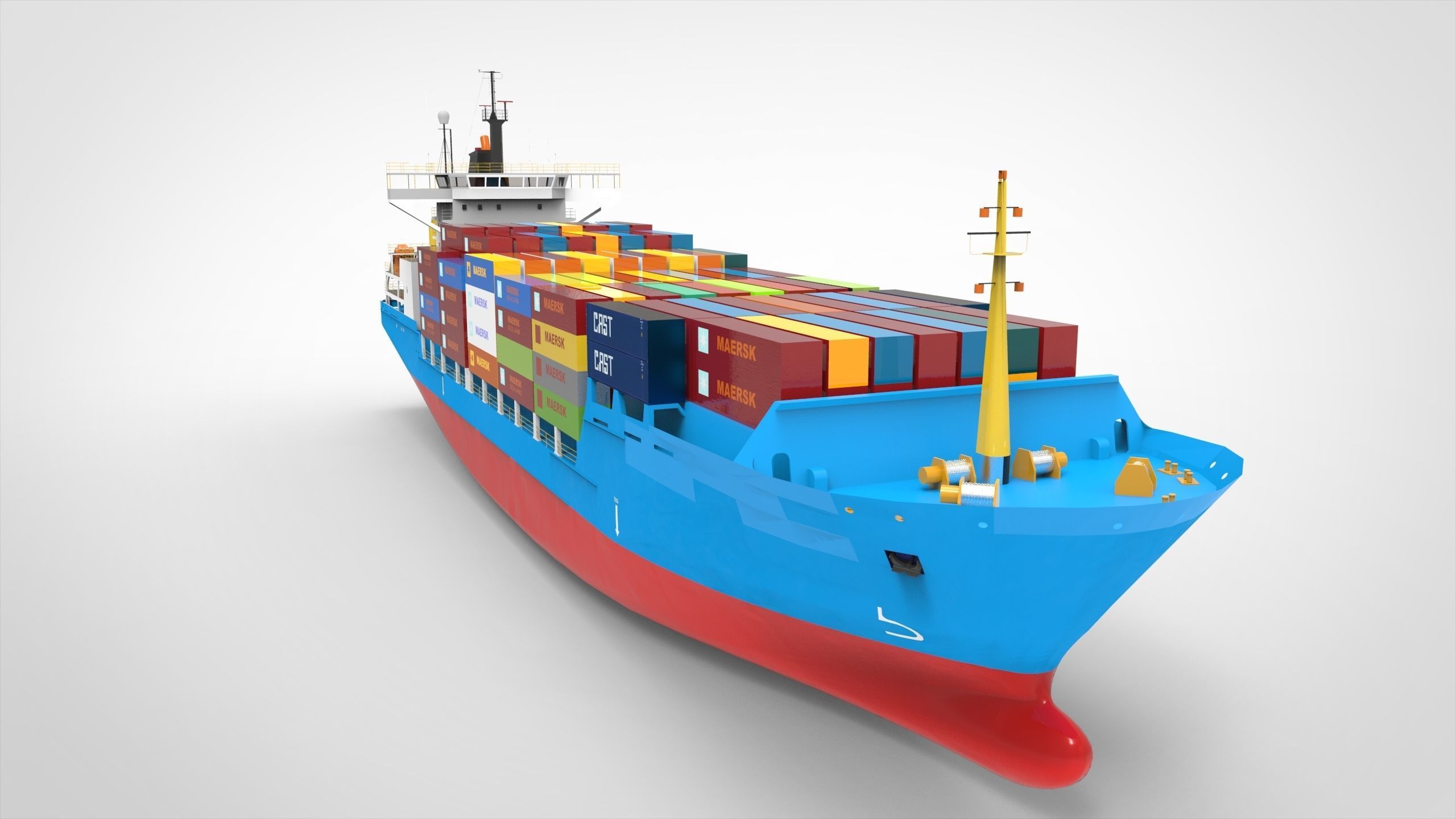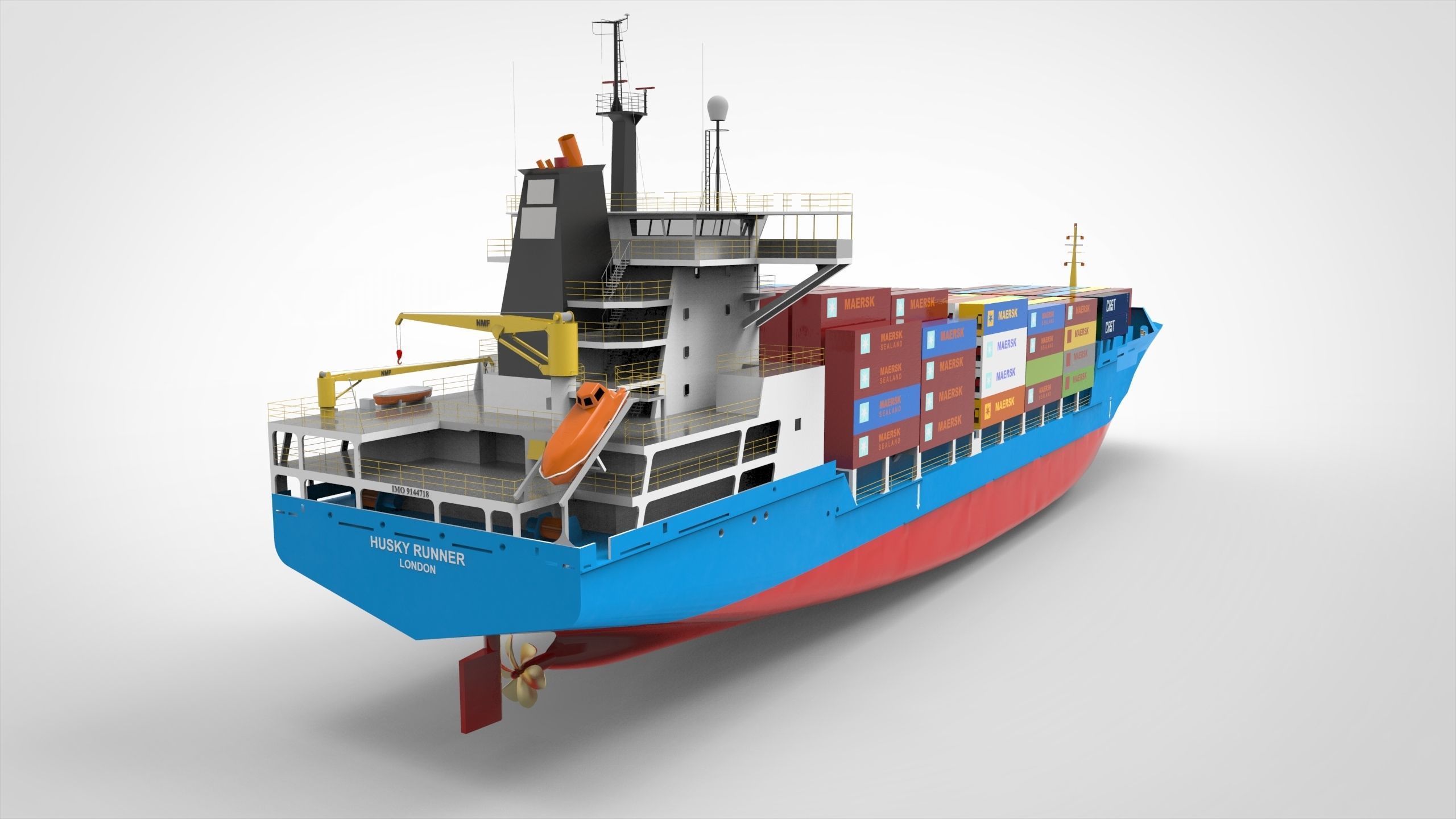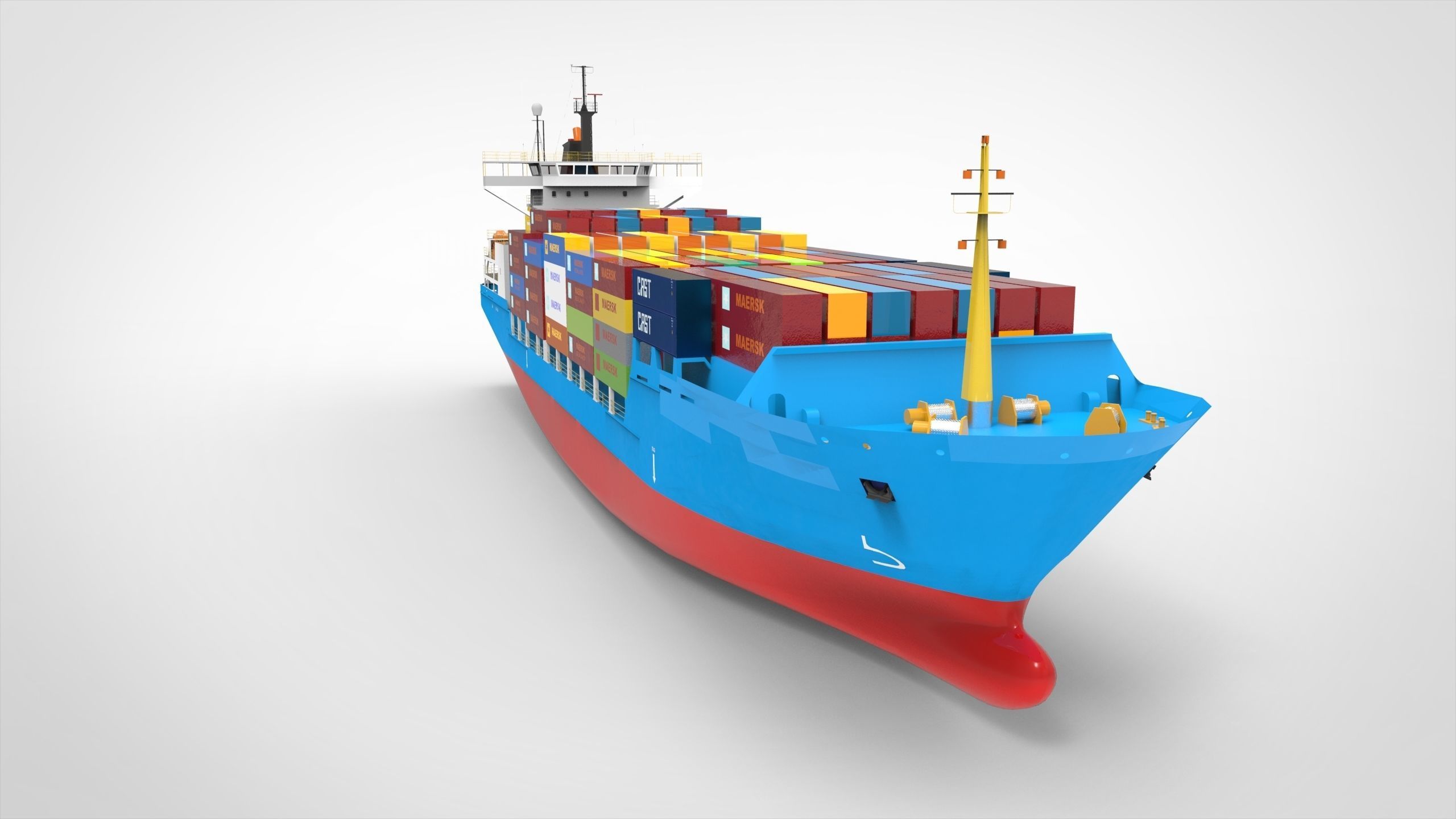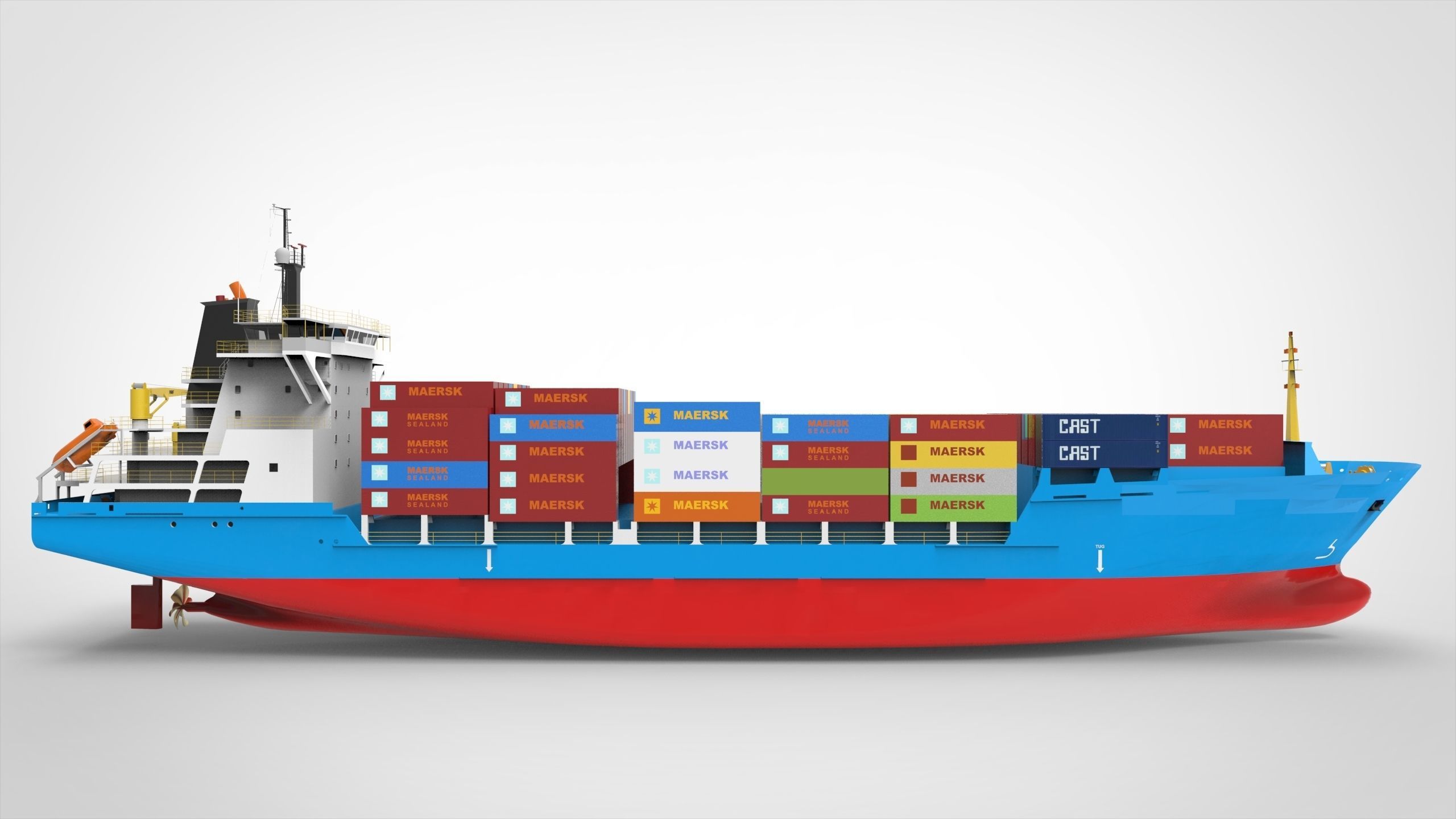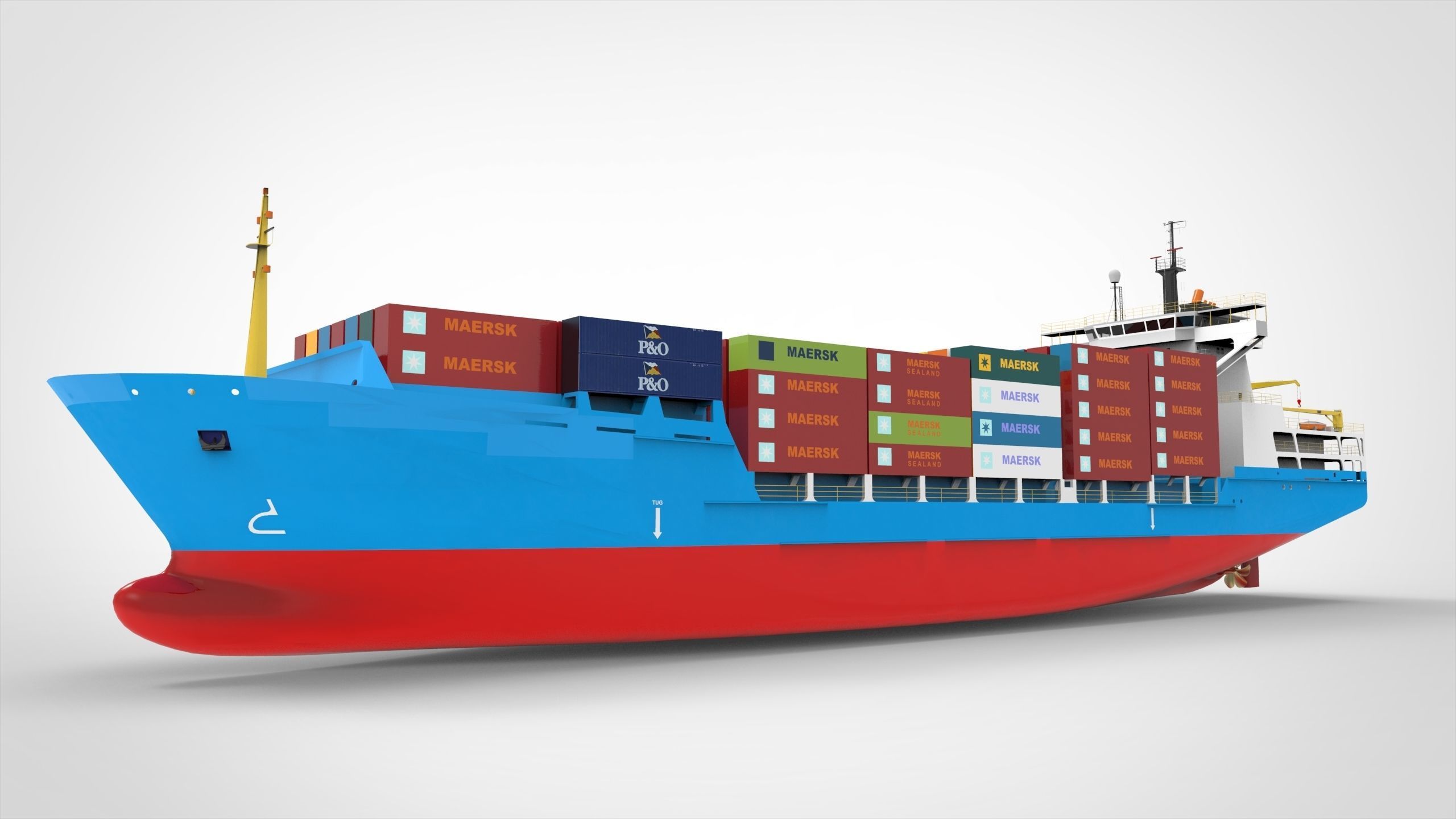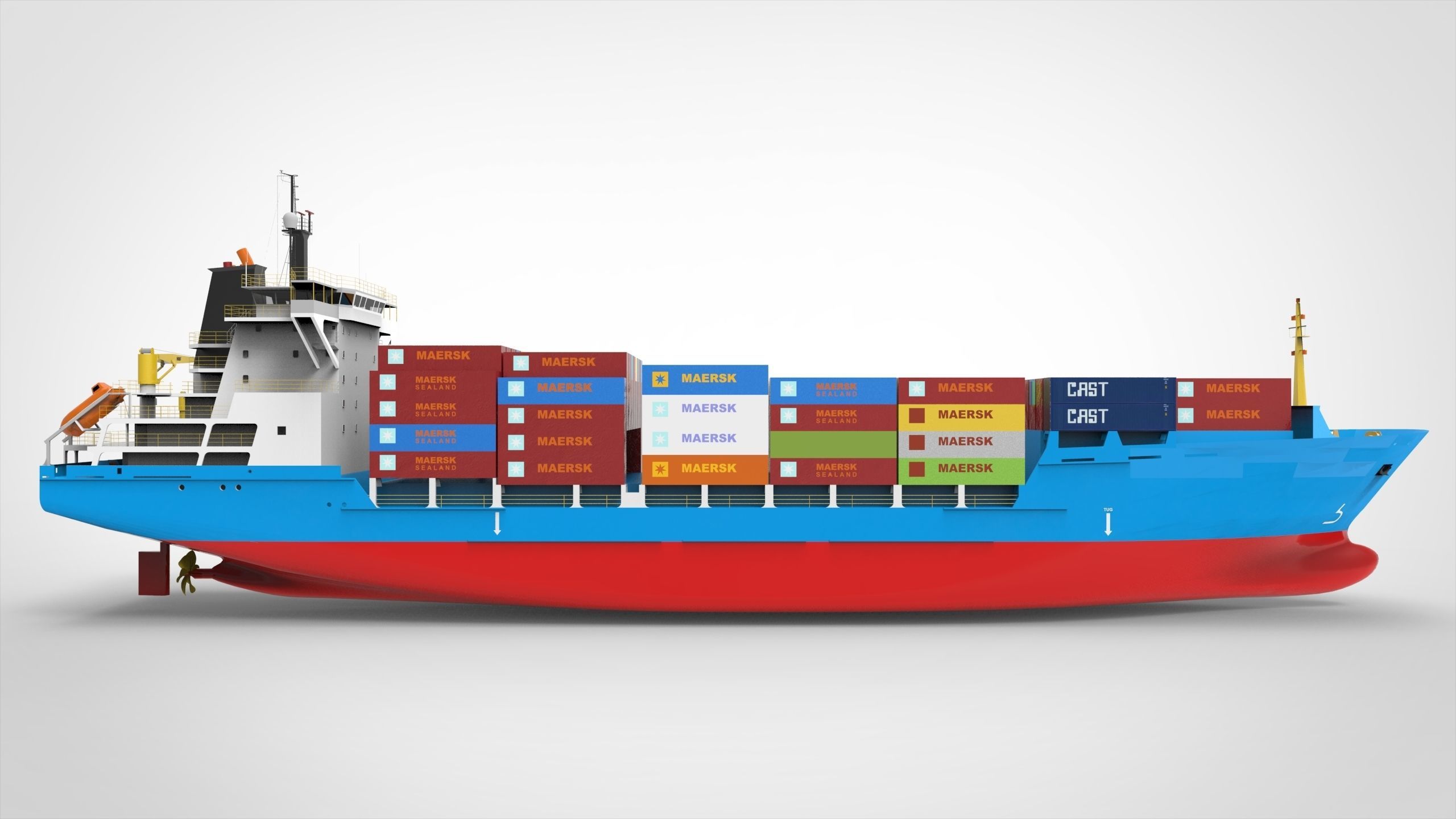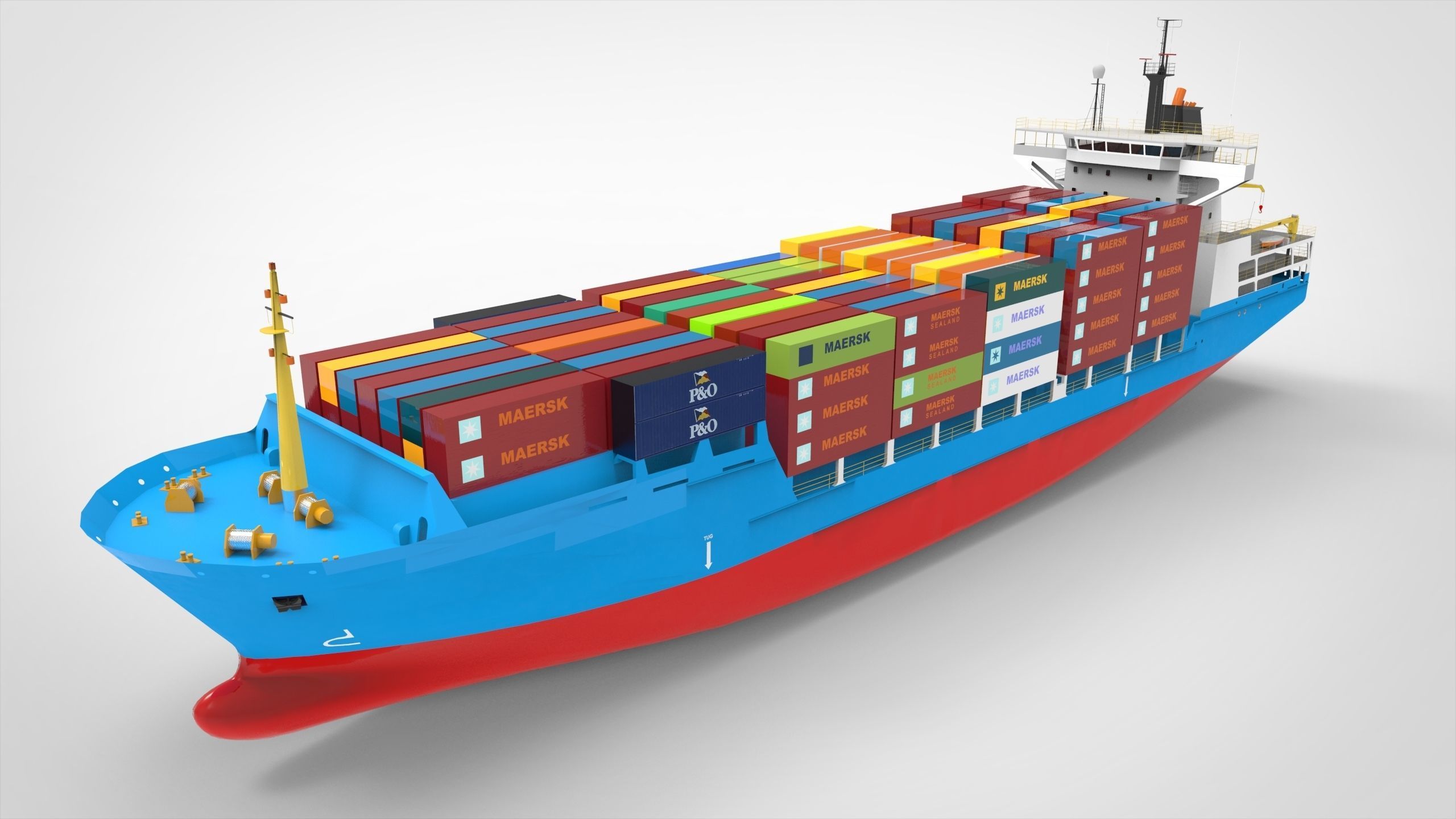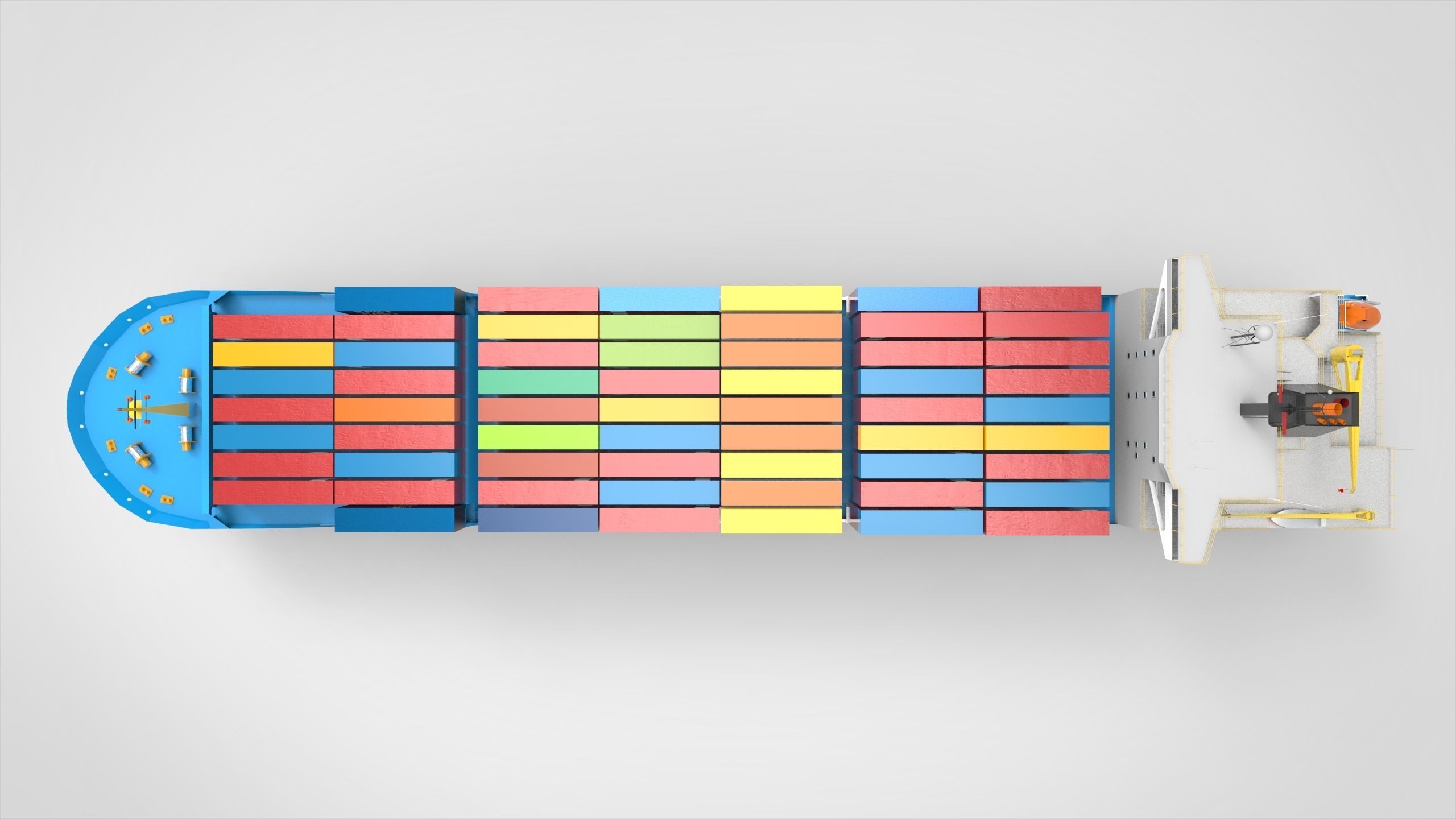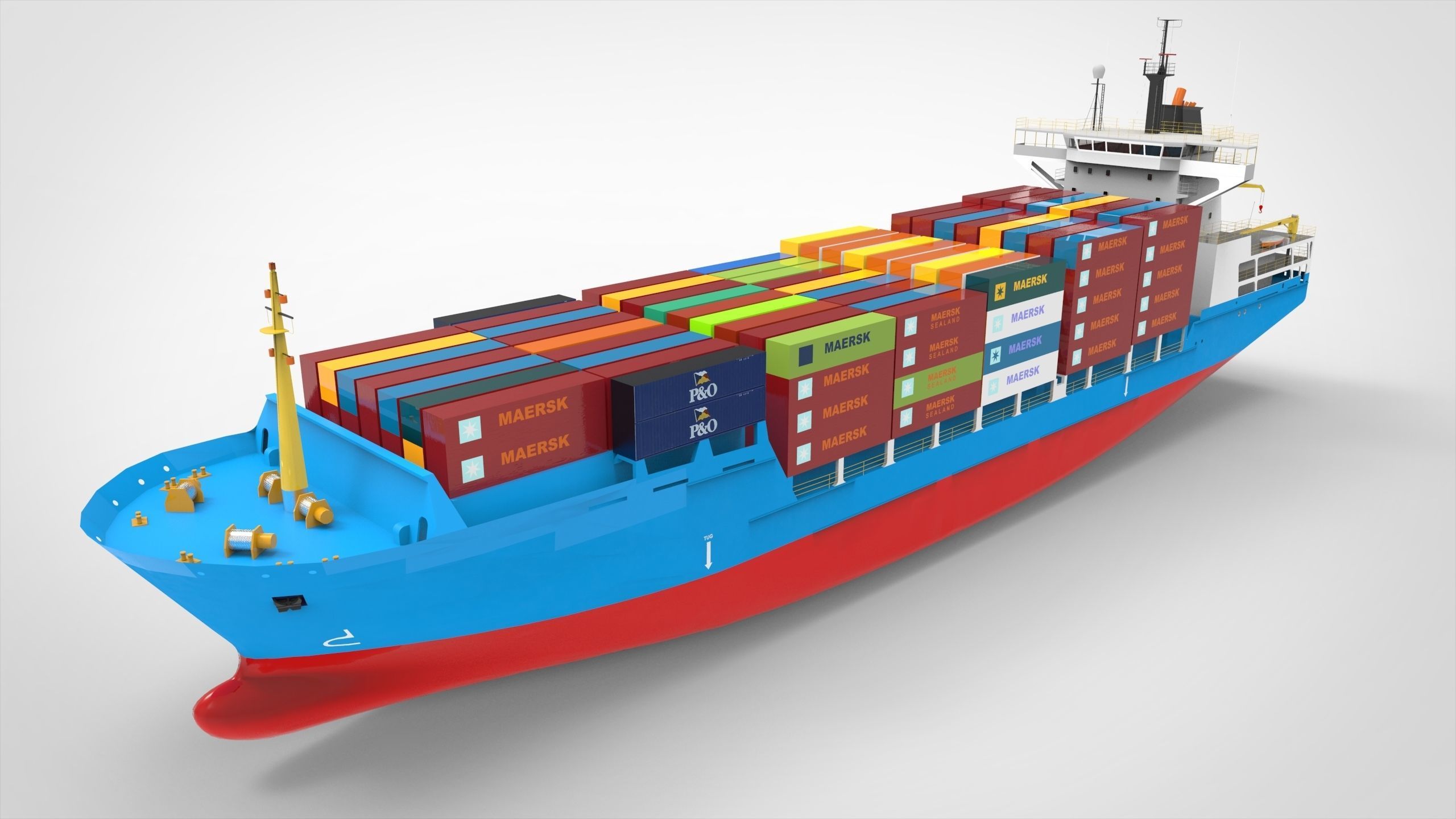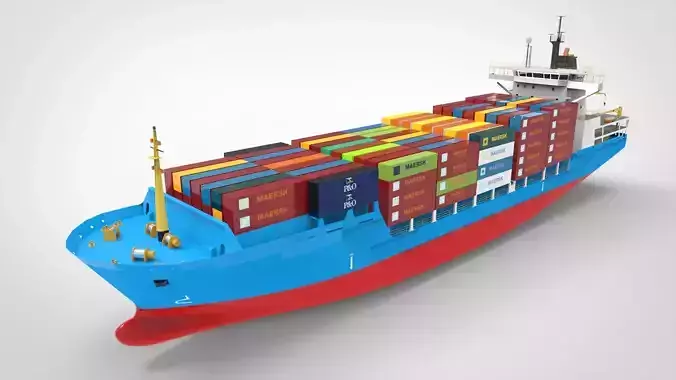
Container Ship Low-poly 3D model
Container ships (sometimes spelled containerships) are cargo ships that carry all of their load in truck-size intermodal containers, in a technique called containerization. They are a common means of commercial intermodal freight transport and now carry most seagoing non-bulk cargo.
Container ship capacity is measured in twenty-foot equivalent units (TEU). Typical loads are a mix of 20-foot and 40-foot (2-TEU) ISO-standard containers, with the latter predominant.
Today, about 90% of non-bulk cargo worldwide is transported by container ships, and the largest modern container ships can carry over 23,000 TEU (e.g., MSC Gülsün). Container ships now rival crude oil tankers and bulk carriers as the largest commercial seaborne vessels.
Name: Container shipSubclasses: (1) Geared or gearless (as per cargo-handling type)(2) Freighter or pure container (as per passenger carrier-type)(3) Feeder or world-wide foreign-going vessel (as per trade)(4) Panamax or post-Panamax vessel (as per breadth of vessel < or > than 32.2m respectively)Built: 1956–presentIn service: 9,535 ships as of 2010General characteristicsPropulsion: Typically diesel since 1990Speed: Typically 16–25 knots (30–46 km/h)Capacity: Up to 24,000 TEUNotes: Reduced superstructure, containers stacked on deck, bulbous bow

